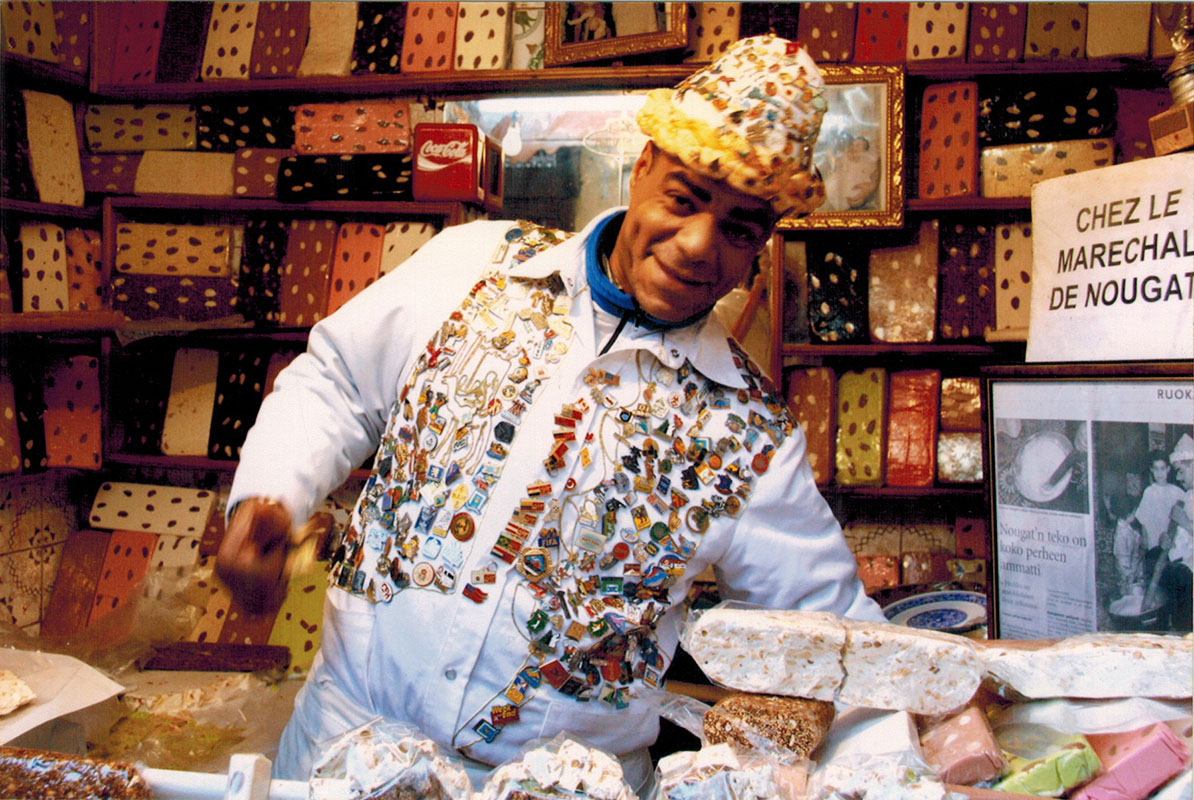
On the drive to to the colorful city of Fez we passed mile after mile of cork-oak trees with their bark half-stripped. Everything here was intensely green due to recent unseasonably heavy rains, the land becoming more smoothly undulating as we drove. This area is the breadbasket of Morocco, full of wheat and barley fields, olive orchards and vineyards, very reminiscent of California. Yellow and orange African daisies carpeted the roadside for miles. Fez itself was loaded with orange trees and date palms and was bustling with pedestrians on the wide main boulevard of the new section of town.
Most large cities here have an Old Town — the medina with the original architecture and cramped, winding lanes largely preserved inside historic walls — and a New Town that has modern buildings and gridded streets designed by the French who colonized this country at the beginning of the 20th century.
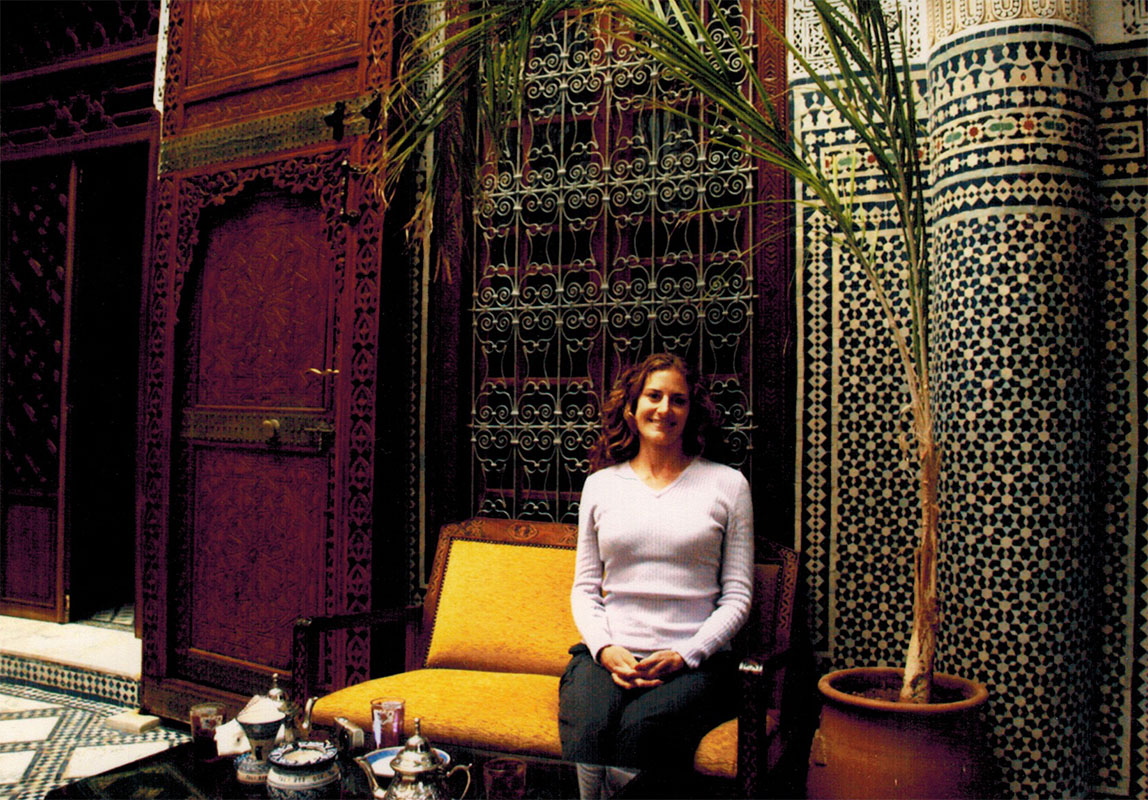
Our riad, or guesthouse, was located on a nondescript street within the medina. The beautiful Dar Al Andalous is a traditional Andalusian-style former home that has been refurbished and turned into a bed-and-breakfast. We fell in love with the decor of the central courtyard and our elegant room with its mosaic tile floors, elaborately sculpted plaster walls, gorgeous cedar ceilings and rich tones of red wine. (Quite the contrast from our digs in The Gambia!)
But that’s the case with Moroccan-style architecture. It’s drab and even run-down looking on the side facing the street, often with no windows, and only once you get inside do you see the beauty of the decor and the light coming from the courtyards and gardens open to the sky above.
Fez is famous for its highly skilled, traditional craftsmen, and there’s no better place to see them in action than in the medina. We spent one entire day wandering around the medina, in particular the souk area. It was a mad maze of narrow cobblestone alleys where thankfully cars are prohibited. Bicycles, motorbikes, donkey carts and guys hauling long loads of lumber on their backs, however, are not, so you have to be careful to avoid bruises or a concussion while shopping. Donkeys haul everything from fresh produce or bags of cement to crates of Coca-Cola or tanned hides bound for shoemakers.
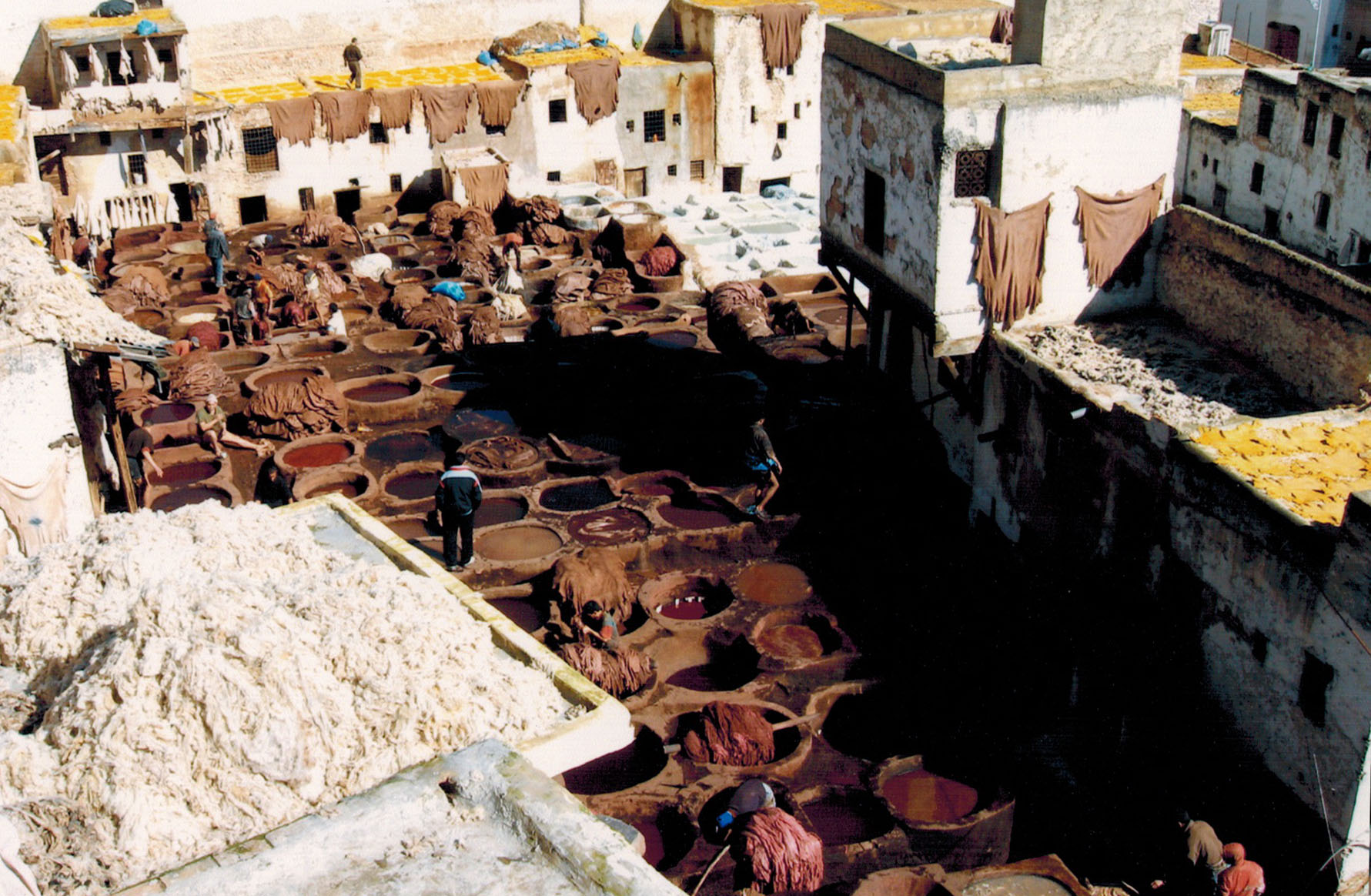
We found the Chouaras Tanneries particularly fascinating, but only when viewed on a terrace of one of the surrounding shops from which you can look down on the leatherworkers dipping tanned hides into large stone vats of dye. Mere descriptions — and even the photo above — cannot do this spectacle justice.
You can find almost anything for sale in the souk. Fishmongers cut the heads off fish with scissors not far from lamp stores; carts brimming with oranges sit next to nougat sellers and incense shops. Certain streets, though, house particular handicraft traders and you can watch master woodcarvers, metalsmiths, weavers and leatherworkers producing an unbelievable array of goods.
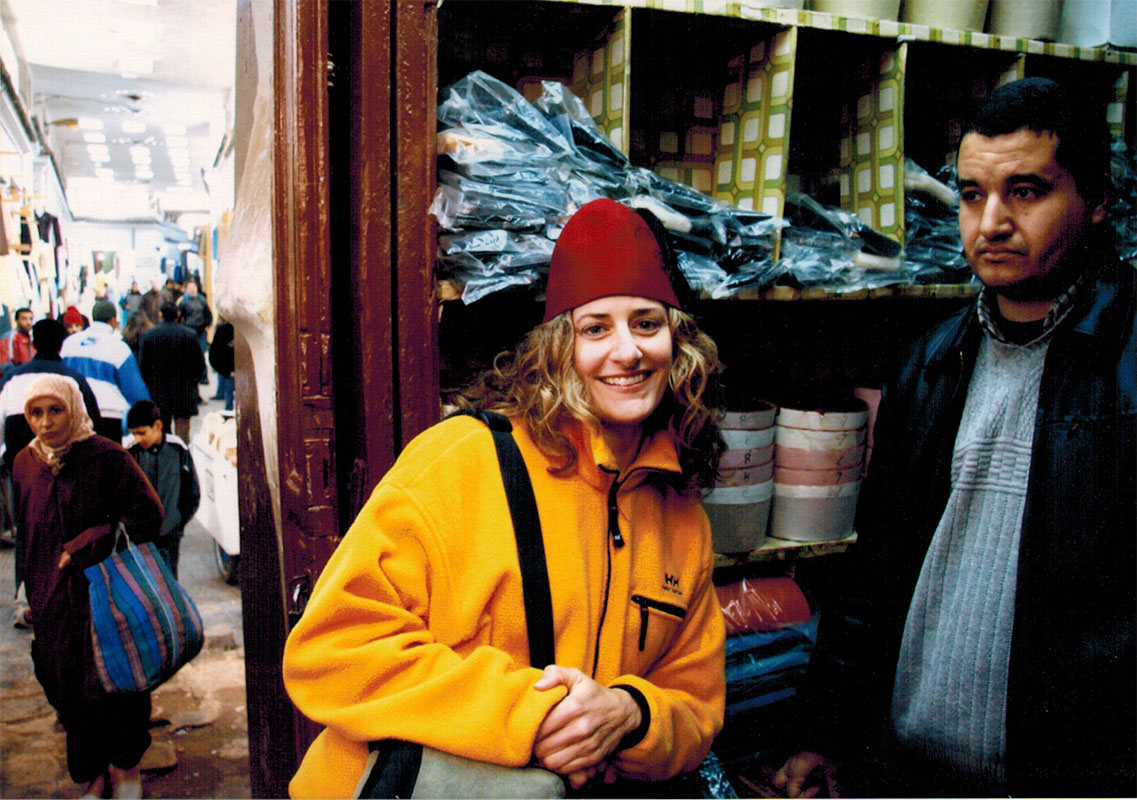
We each bought a fez hat and I picked out a pair of pointy, yellow leather slippers known as babouches, which I continue to wear indoors and love. Locals, at least in Fez, more often sported the fez in its original domed shape rather than with a flattened top like Shriners in the States. The hat purchase was more of a touristy impulse but I have been known to don it on occasion, usually after a few drinks, when it catches my eye from atop the shelf.
We also went into a few carpet shops to see the difference between the florid Arab carpets and the plainer Berber-style carpets that lack symmetry and tend to employ more earth tones and orange hues, with designs very similar to Native American rugs. There’s pressure to buy but we stuck to our guns in insisting we were not in the market for one.
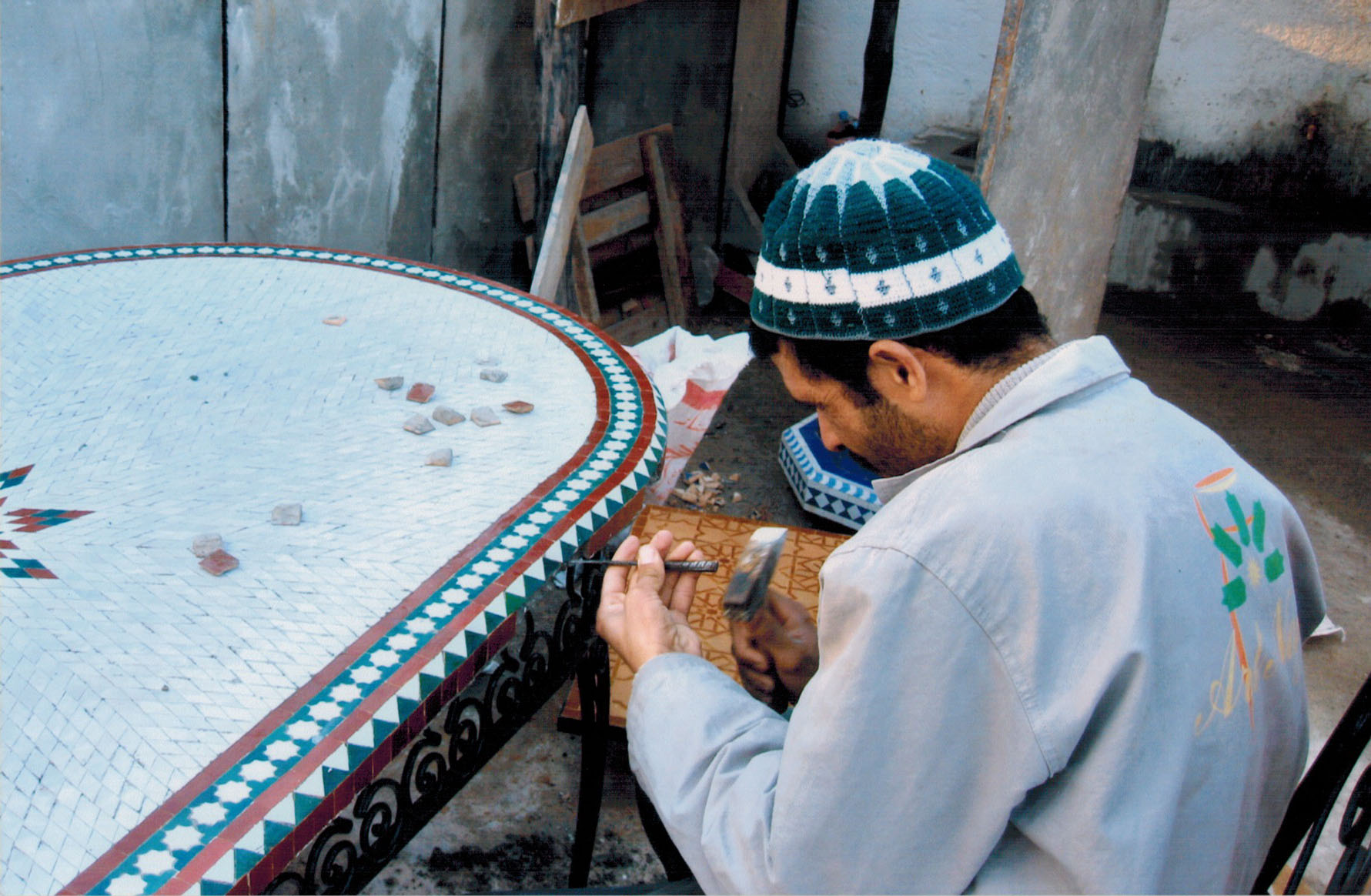
Toward the end of one day we went outside the medina to a ceramics factory. Luckily for the pulmonary health of the medina’s residents, these factories are only allowed on the outskirts of the New Town because of all the black smoke emitted by the burning of olive pits to fuel the furnaces where they fire the clay. I enjoyed seeing the step-by-step process required to make Moroccan pottery, especially what goes into making mosaics. These start out from painted square tiles that are then hand-cut into an array of shapes and painstakingly arranged upside-down on the ground in the most intricate patterns. Amazing.
Our riad, the Dar Al Andalous, served an excellent dinner of traditional Moroccan cuisine, but one night we went to another guesthouse, Riad Al Yakout, that had been opened fairly recently just down the block by a friend of Mohamed’s. This place was even nicer than where we were staying (but not by much) and the food was outstanding. Harira — a delicious lentil and vegetable soup — was followed by little dishes of mashed and spiced vegetables, then came the tajine — a rich but healthy stew. Dessert here is often simply orange slices sprinkled with cinnamon and orange water.
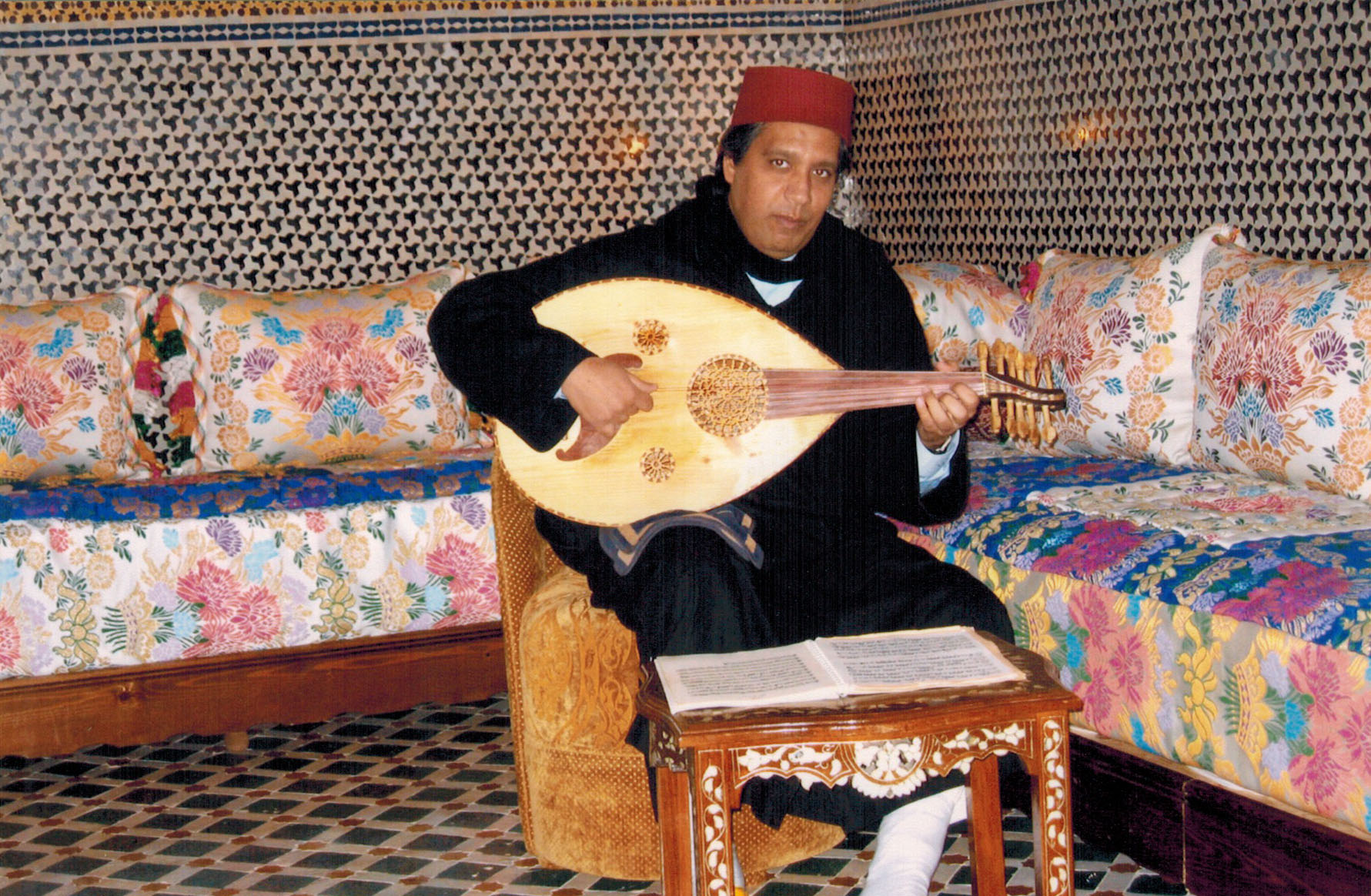
All the while a guy entertained us with some delightful Andalusian tunes played on a lute. I always thought the lute was a musical instrument from European medieval times, but Mohamed told us it originated with the Arabs.